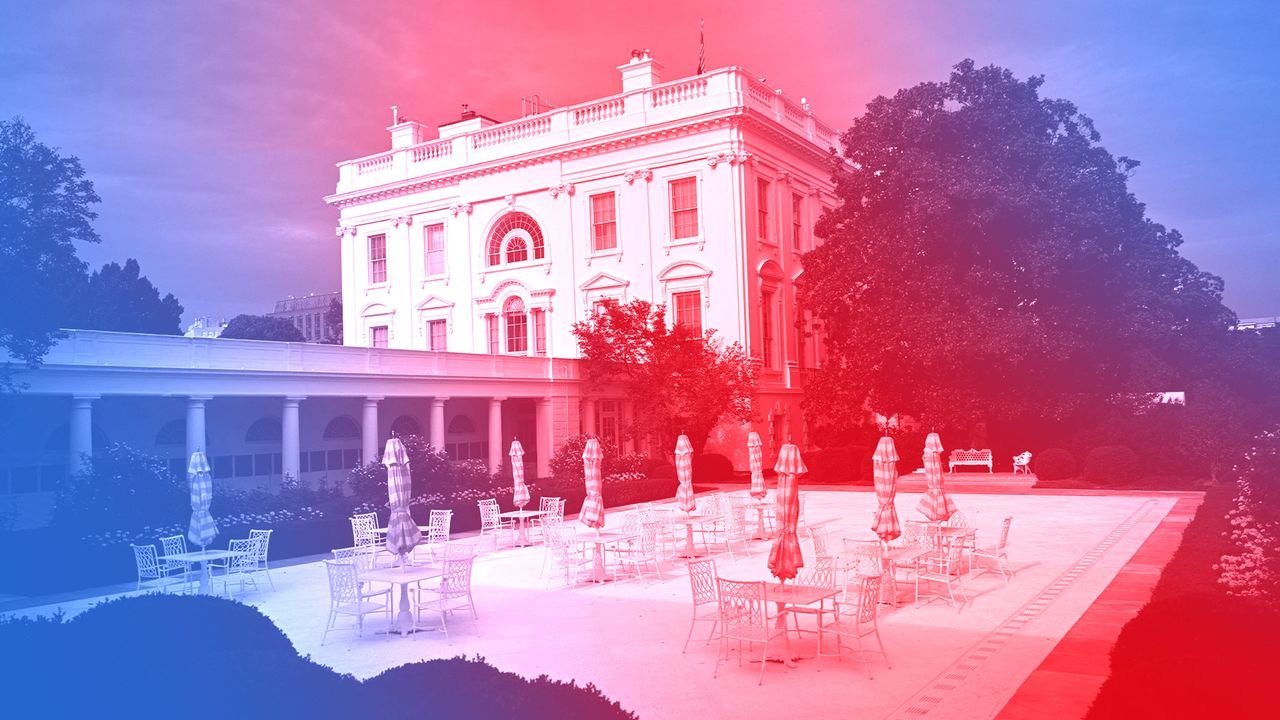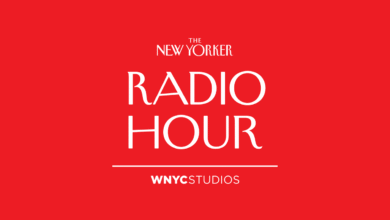
That Donald Trump would end up shouting from the rooftops of Washington is not, in and of itself, all that surprising; that he did so in actuality and not just metaphorically was a bit of a shock. “Sir, why are you on the roof?” one journalist asked, when the President suddenly appeared on the flat-top exterior of the White House this week. “Taking a little walk,” the President replied. The unusual photo op captured Trump, accompanied by his architect, surveying from on high how his planned two-hundred-million-dollar, ninety-thousand-square-foot ballroom, to be built in place of the current East Wing, will transform the executive campus. He might have also wanted a bird’s-eye view of the newly Trumpified Rose Garden, the iconic green space designed by Bunny Mellon, which was recently paved over in “very white” stone on Trump’s orders. The President has not yet demanded that his name be emblazoned on the latest additions to the White House complex, but would anyone be stunned if he does? Truman has a balcony; Trump’s ballroom will be bigger, gaudier, and, it’s safe to predict, a lot more gilded.
The controversy about the project’s gargantuan size, obscene price tag, and questionable aesthetics was inevitable—he’s cutting cancer research but building himself a tacky ballroom? If Democrats can’t capitalize on this politically, they should ask Trump’s advice on filing for bankruptcy. But what stood out to me in the White House’s official announcement about the construction project was its relatively short time frame. “It is expected to be completed long before the end of President Trump’s term,” the statement said. Maybe it was wrong, but I took this as good news—a sign, perhaps, that he’s really planning on leaving? “It will be a great legacy project,” Trump promised, which sounded encouragingly like someone thinking about life after office. An alternative theory, however, is just as plausible: that the President, ever the real-estate pitchman, had insisted on publicly announcing an unrealistic deadline for the construction.
A few days after revealing the project, which would be the largest addition to the compound since Teddy Roosevelt built the West Wing, in the early twentieth century, Trump gave an interview to CNBC, in which he was asked about leaving office at the end of his second term, in 2029. In the past, he’s often dangled the possibility that he would try to run for a third term, defying both his own advanced age and the Constitution’s very clearly written Twenty-second Amendment, which limits Presidents to two terms. Loads of “Trump 2028” merchandise on his website attest to the fact that at least his fund-raising team still thinks there is a chance of this happening. But on Tuesday, the President said that he would “probably not” attempt to run again. Later that day, when asked about possible successors, he came closer than he has before to anointing J. D. Vance as his theoretical heir apparent, calling the Vice-President the “most likely” nominee and “probably favorite” in 2028. Another sign, perhaps, of Trump beginning the long, slow pivot to legacy mode.
Now that he’s made his plans for the White House public, they make perfect sense to me. Marbled halls and golden pillars bearing his personal stamp were always going to be the kind of Presidential accomplishment that mattered most to the master of Mar-a-Lago—so much else that he’s promised to do, after all, rests on the fantastical castles of air that he’s so adept at conjuring with his bluster. I have no doubt that he can cajole a couple hundred million dollars for his White House addition out of various billionaires and corporate rent-seekers who will see their presumably undisclosed donations as a small price to pay for whatever access and regulatory rollbacks they are seeking from his Administration. I also have no doubt that Trump will, sooner or later, endorse some or all of the various bills introduced in Congress by Republican members looking to rename everything from the John F. Kennedy Center for the Performing Arts to the Washington Dulles International Airport in his honor. This is a man who has put his name on the cover of the Bible in order to sell copies of it; of course he is going to want it chiselled on as many Washington landmarks as possible.
Trump’s actual legacy, though, will be much harder to secure. He has, immodestly, promised to personally deliver an end to the world’s most grinding conflicts and a transformation of the global economy on terms more favorable to the United States. He insisted that consumer prices would plunge the second he took office and that energy prices would fall by fifty per cent within eighteen months of his return to power. He suggested that he will turn Canada into the fifty-first state and that Gaza will become a beautiful new Riviera. What happens when, inevitably, he falls far short or, worse, triggers the economic crisis and authoritarian backlash that his critics fear we are headed for?
As I write this, on the two-hundredth day of his second term, Trump’s sweeping tariffs have come into effect on dozens of countries, news he greeted with an ebullient social-media posting: “IT’S MIDNIGHT!!! BILLIONS OF DOLLARS IN TARIFFS ARE NOW FLOWING INTO THE UNITED STATES OF AMERICA!” I’ll leave it to the economists to explain why, rather than some new golden era, the tariffs may well herald the start of a hellish new age of stagflation and national debt. But we all know that, facts notwithstanding, the pitchman is never going to stop pitching. On Wednesday, while receiving golden tribute—literally—from the Apple C.E.O., Tim Cook, Trump had a message about the down-to-the-studs economic renovation that he’s ordered up: growth, he insisted, will be “unprecedented.”
But in truth Trump is not a builder; he’s a smasher. His facility as a politician has been all about setting himself up in opposition to the existing order—and then encouraging supporters to help him knock it down. To anyone who still remembers January 6, 2021, this is not just a metaphor. And it applies to his approach toward policymaking as well: since returning to office, Trump has already withdrawn from the global climate accord, repealed hundreds of federal regulations, permanently rolled back tax rates on corporations and wealthy individuals, and placed a special emphasis on undoing anything that was a priority of his Democratic predecessors, repudiating initiatives as varied as clean-energy tax credits and the promotion of diversity in hiring.
The President, whose greatest pre-Washington achievement was building a New York skyscraper that bears his name, remains “a builder at heart,” his chief of staff, Susie Wiles, said in a statement. Reading her words, I thought back to those first-term chimeras that Trump loved to conjure but hardly mentions anymore—the revitalized coal mines, the new steel-manufacturing plants, and the big, beautiful wall. All of them are as real today as that construction deadline for the addition to the White House. Susie Wiles is wrong: the story of Trump, so far, is not about what he has built but what he has torn down. It is destruction, not construction, that he has excelled at, in a tenure defined by the blowing up of norms, rules, laws, and conventions that have governed the Presidency for decades. Some legacy. ♦
Source link






